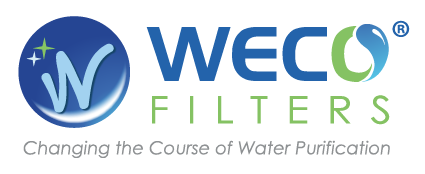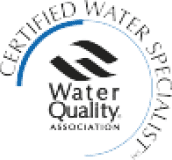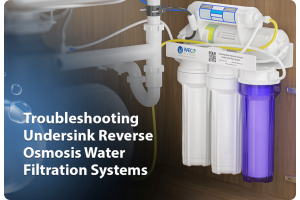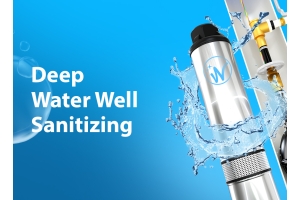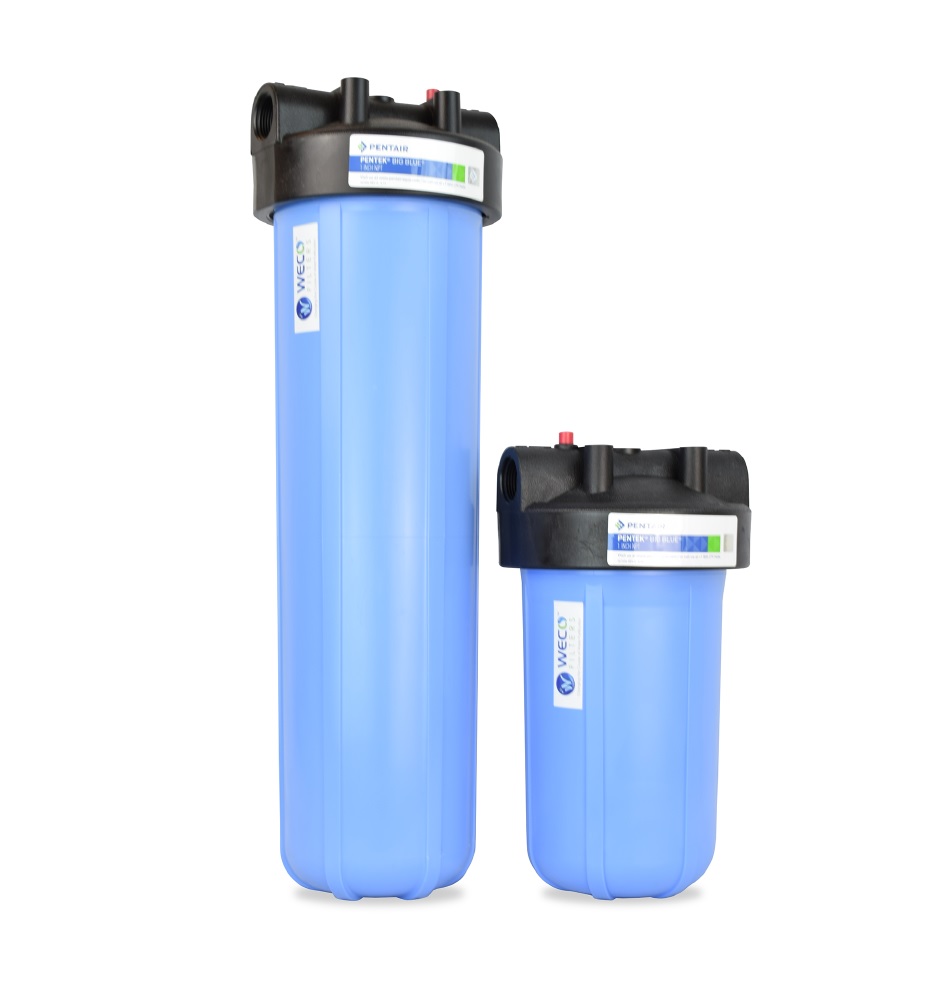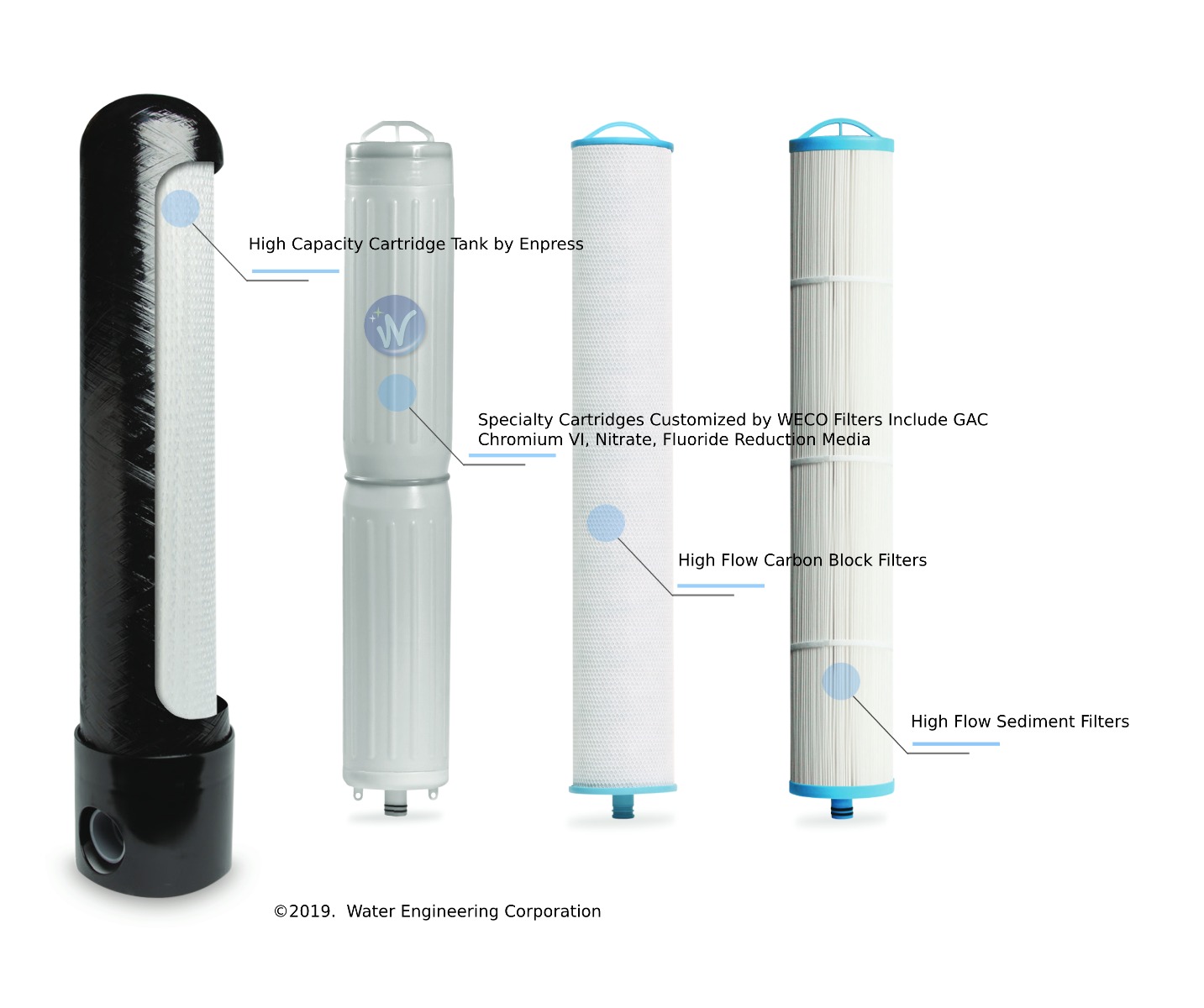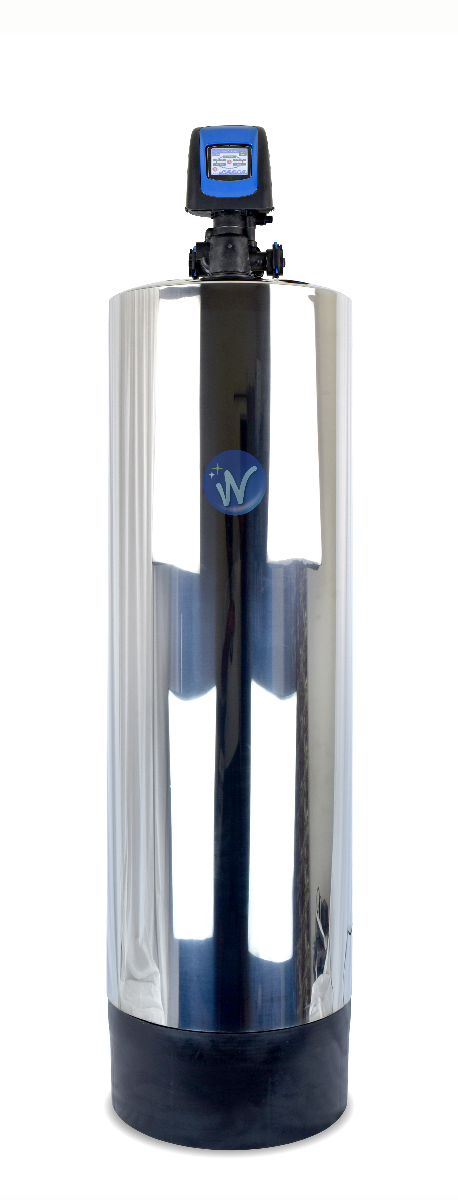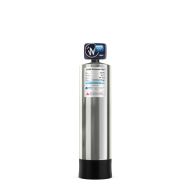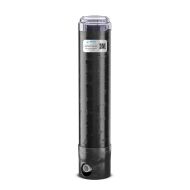Whole House Water Filtration: Cartridge or Backwash Tank Systems?
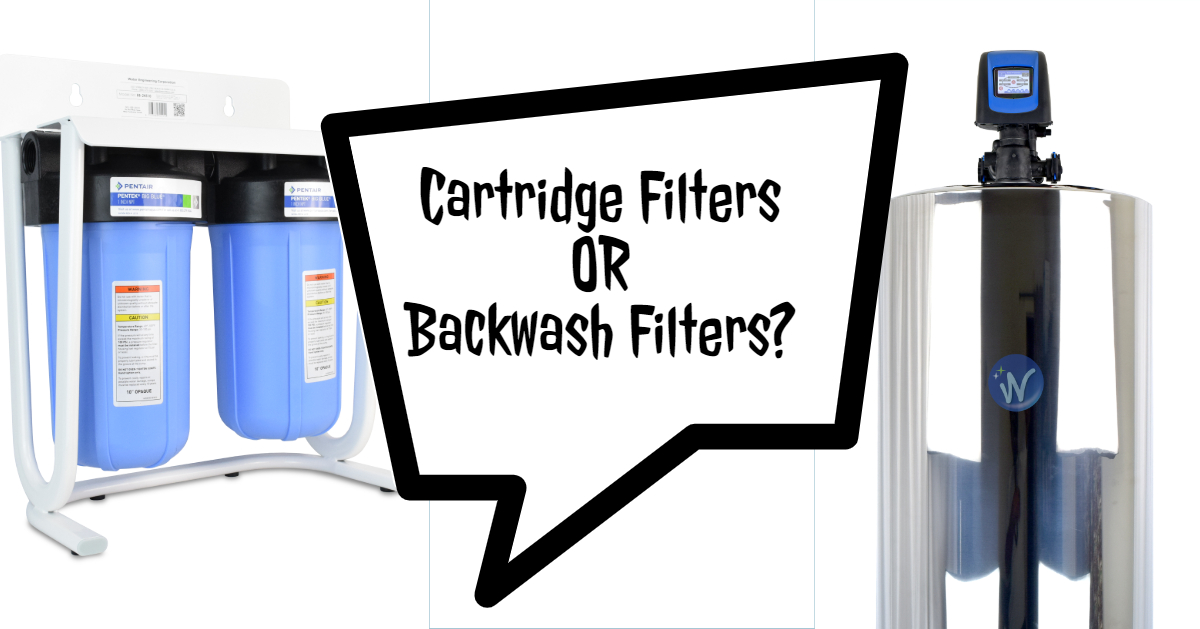
What types of whole house water filtration systems are out there?
Whole house water filters can be either cartridge based or tank based. They each feature different components that perform unique functions. Tank based filters also go by 'backwash' or 'self-clean' filters since they clean and reuse the filter media by pumping water backwards through the filter bed and flushing trapped contaminants down a drain.
Cartridge based filters are much cheaper upfront, easier to install and does not require much space. They do not require a drain connection and can even operate at low house water pressures. However, the filter cartridges may need frequent replacement depending on your water quality and water use. Unfortunately, cartridge based filters can severely restrict the water flow and pressure.
Canister Type Water Filters
Next up from the canister filter systems are cartridge tank systems. Cartridge tanks are a direct replacement for small and inefficient 2½” or 4½” housings, or expensive Stainless Steel cartridge housings, and offers extended service and life, and a more cost effective and efficient filtration solution. WECO filters stocks Enpress cartridge tank systems that can be used with many types of filtration medium depending on your application to remove particulate matter, organics, chlorine, chloramine, TDS, fluoride, chromium VI, nitrate, or other contaminants.
Cartridge Tank Based Water Filters
Tank based filters are less restrictive of the water flow. We try to recommend these systems whenever we can, because of the excellent water flow, longer media life and enhanced contaminant reduction performance. However, tank based systems require more space, electricity to operate the control valve and connection to a drain pipe. We recommend hiring a plumber to do the installation. Please note that a minimum of 20 psi (1.4 bar) of water pressure is required for the backwash/regeneration valve to operate effectively. You must have an air gap on the drain line to prevent back flow of drain water into the system. A 2x the drain line pipe diameter air gap is required with a minimum 1" air gap.
Backwash Water Filters
What will this filter?
Cartridge filters like our Big Blue or DP-Big can be retrofitted with sediment, carbon or multimedia cartridges. A sediment filter removes sand, grit, precipitated mineral particles, insoluble iron oxide and other debris. Carbon filters eliminate taste and odor problems caused by chlorine and chlorine dioxide water treatment chemicals. Multi media filter cartridges can be used to treat a variety of water problems like fluoride, arsenic, scale, corrosion control, nitrate, lead, organics and more.
Backwash tank based systems can use either a single medium or multiple media based on what it is engineered to filter. Our CCMG seld-cleaning filters contain a bed of high active catalytic catalytic carbon and a media guard filled with KDF process media. Cat carbon reduced chlorine, chloramine and organic contaminants in water while the KDF redox media removes water-soluble cations (positively-charged ions) of lead, mercury, copper, nickel, chromium, and other dissolved metals. NextSand filters reduce sediment and turbidity in water ; Katalox light filters reduce iron, manganese and hydrogen sulfide (rotten egg smell) in water ; NTO filters with nano titanium oxide reduces arsenic and heavy metals in water.
What service flow velocities are possible?
Please vist the equipment web page for a service flow and backwash flow chart or contact a WECO support professional.
Where should a whole house filter be installed?
Cartridge filters should be installed after the pump or water meter.
For backwash filters, make sure the installation location meets following requirements.
- Water pressure and flow rate are sufficient to support backwash.
- There is an adequate drain for maximum total volume produced during the regeneration cycle and can be used with an air gap device per local plumbing codes.
- There is an electrical outlet to connect the control head transformer.
- Adequate space for installation.
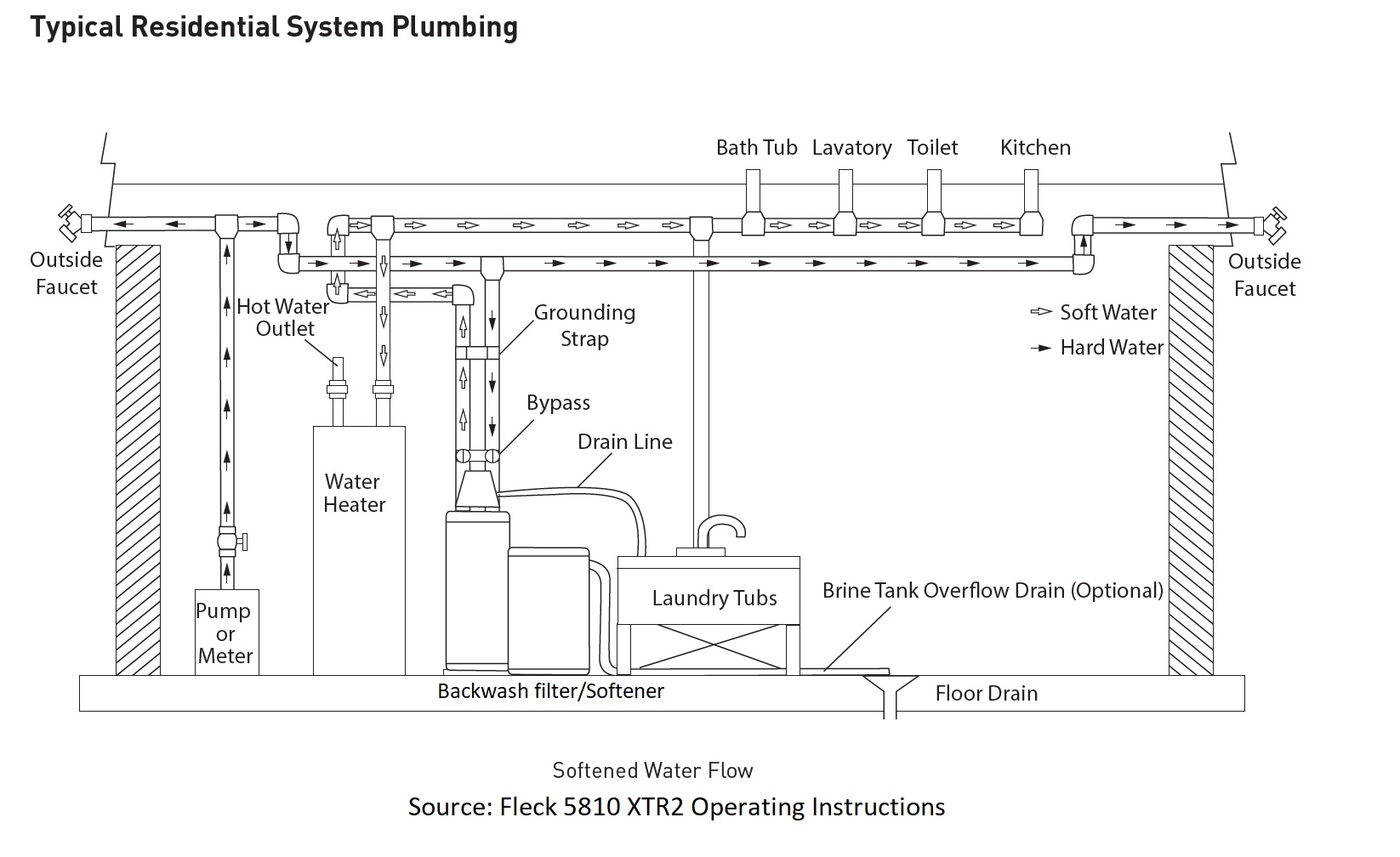
Does the cartridge filter or filter media ever have to be changed?

Cartridge change interval will depend on your water quality and water use. However, in our experience, even a sediment cartridge filter needs to be changed at least every 6 months.
Backwash filter media generally last much longer than cartridge filters. However, life of the media will again depend on the type of media used, your water quality, what you are trying to filter and finally your water usage. NEXT sand media is advertised to last 5 year or longer. Katalox light recommended media life is 7-10 years. Catalytic carbon filters typically need media changed every 4-6 years.
How can I disinfect a backwash filter?
The materials of construction of the modern water filter will not support bacterial growth, nor will these materials contaminate a water supply. During normal use, a backwash filtermay become fouled with organic matter, or in some cases with bacteria from the water supply. This may result in an off-taste or odor in the water. Some filters may need to be disinfected after installation and some filters will require periodic disinfection during their normal life. Depending upon the conditions of use, the style of filter, the type of ion exchanger, and the disinfectant available, a choice can be made among the following methods.
Sodium or Calcium Hypochlorite
These materials are satisfactory for use with polystyrene resins, synthetic gel zeolite, greensand and bentonites.
5.25% Sodium Hypochlorite
These solutions are available under trade names such as Clorox*. If stronger solutions are used, such as those sold for commercial laundries, adjust the dosage accordingly.
1. Dosage
A. Polystyrene resin; 1.2 fluid ounce (35.5 ml) per cubic foot.
B. Non-resinous exchangers; 0.8 fluid ounce (23.7 ml) per
cubic foot.
2. Salt tank softeners
A. Backwash the softener and add the required amount of hypochlorite solution to the well of the salt tank. The salt tank should have water in it to permit the solution to be carried into the softener.
B. Proceed with the normal recharge.
*Clorox is a trademark of the Clorox Company.
Calcium Hypochlorite
Calcium hypochlorite, 70% available chlorine, is available in several forms including tablets and granules. These solid materials may be used directly without dissolving before use.
1. Dosage
A. Two grains (approximately 0.1 ounce [3 ml]) per cubic foot.
2. Salt tank softeners
A. Backwash the softener and add the required amount of hypochlorite to the well of the salt tank. The salt tank should have water in it to permit the chlorine solution to be carried into the softener.
B. Proceed with the normal recharge.
References:
- Fleck 5810 XTR2 Control Valve Service Manual
- “Troubleshooting Problems with POE Backwashing Tank Filtration Systems.” Water Quality Association, Knowledge Base Administration, www.wqa.org
